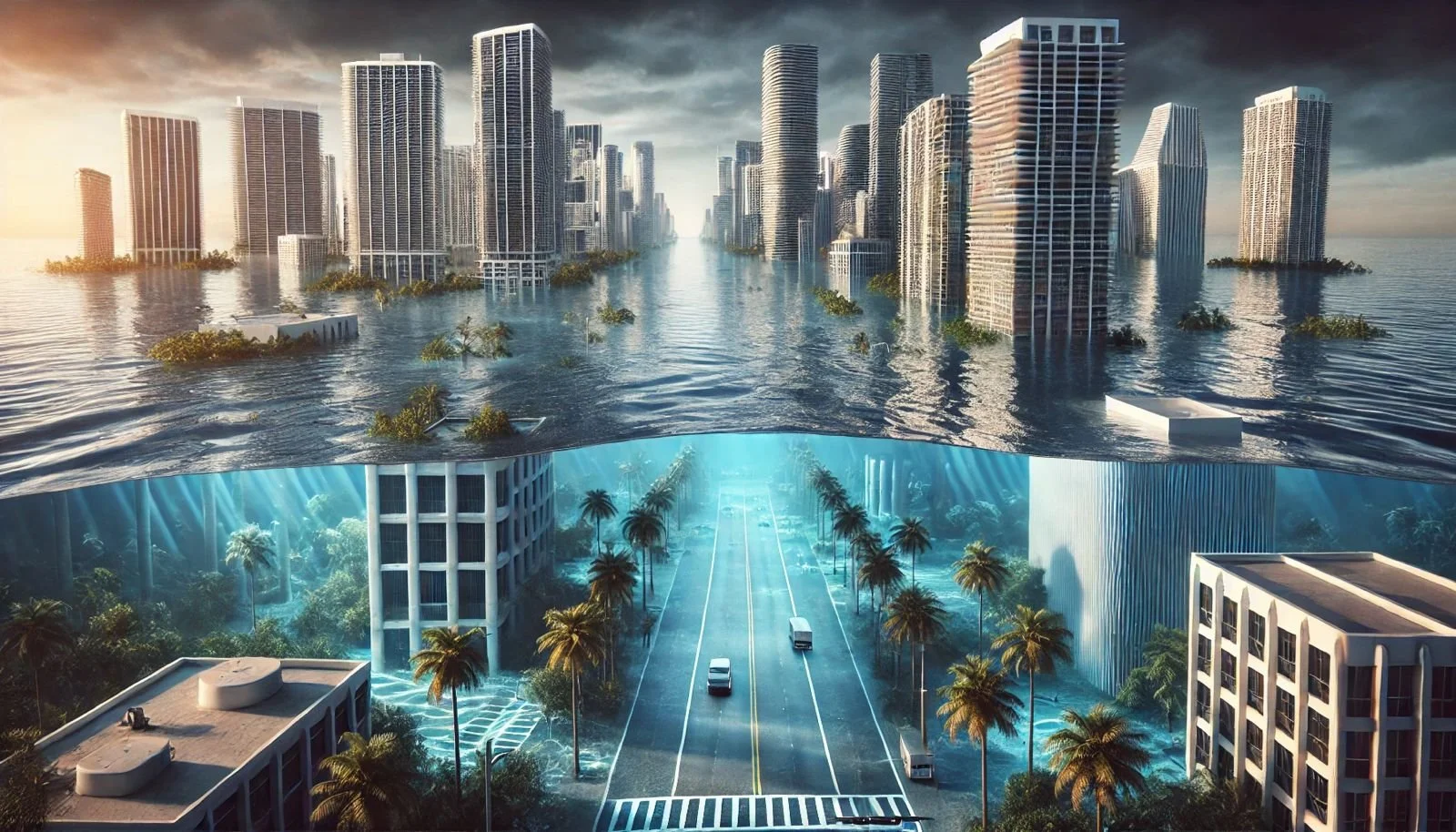Will Miami be underwater someday?
As global warming accelerates, the threat of whether Miami will someday be an underwater city draws ever closer. Sea-level rise threatens not just the world's coastal metropolises but even an icon like Miami, whose cultural festival and fabled beaches attract a sea of tourists. In reality, recent analyses suggest that huge parts of this famous city may drown in the hundredth century now closing. This article analyses the science of rising sea levels, gives details about the implications it has for Miami, and gets closer to what should be done to take measures against this looming crisis.
Understanding Sea Level Rise
Sea levels are mainly being raised by two causes: one is thermal expansion as seawater gets warmer, and the other is the melting of glaciers and ice sheets. According to a recent study, it has been determined that, since the past 80 years, the sea levels have risen by one foot. In addition, projections indicate that this will gradually begin to speed up over the next decades. Moreover, more estimates predict a rise of as much as 31 inches or 79 cm by the year 2060, depending on which location is flooded chronically within low-lying areas such as Miami Beach and Key West.
This is a significant increase. Areas that are occasionally underwater now may be permanently submerged wetlands, unable to be occupied. Miami, for instance, lies only a few feet above sea level, and it would not take much of a rise to bring large sections of the city under water, damaging infrastructure and local ecosystems in the process.
The Situation So Far
Miami is already experiencing the effects of climate change. Flash floods often disrupt people's lives because heavy rains have become more frequent and extreme. Torrential rains in Miami-Dade County flooded some parts of it early in June 2024, which revealed its weaknesses. Millions of dollars have been allocated by local authorities to counter flood projects, but most locals believe that these efforts will be insufficient considering how fast climate change is gaining momentum.
In addition, the cost for residents is rising since insurance prices rise because of flooded areas. More and more locals have to learn to live with the fact that their houses may not be insured for a long period; therefore, the value of property and long-term investment in the district become questionable.
Future Trends
Experts warn that without a drastic reduction in greenhouse gas emissions, parts of Miami may be underwater by 2100. Reports suggest that if current trends persist, areas like Miami Beach could be submerged by 2050. NOAA projections indicate a possible sea level rise of up to six feet under extreme scenarios, impacting not only residential areas but also critical infrastructure like roads and hospitals. Just as proactive measures like Deep Cleaning Seattle promote sustainable living practices, similar initiatives are essential in Miami to mitigate climate impacts and protect essential urban resources.
Mitigation Methods
We cannot do away with sea rise from happening, but we can take up mitigation measures to at least reduce the impacts. Climate adaptation is a method of changing one's infrastructure and policies so that they can survive the tidal rise better. This includes high investment in resilient construction practice and improving the drainage system to take care of increased rainfalls.
Future sea levels must also be included in the urban planning aspect when designing new projects. Developing in disaster-prone areas and constructing there will ultimately save future generations from disasters and safeguard people's lives and local economies. Then the government must work on flood insurance to make it more affordable and accessible to the entire population.
Community Involvement
Such initiatives might include community participation in combating climatic effects, where the local bodies and their inhabitants can play a critical role by advocating stronger climatic policies with the main focus on sustainability and resilience. For instance, the Seattle Green Maids can influence initiatives in Miami for Eco-friendly cleaning to help reduce footprints on the environment.
Education also provides the foundation of community preparedness concerning climate change. By education, house owners will be informed about sea level rise and what this entails. Owners would then make proper decisions on their lands and seek changes for them accordingly .
Conclusion
Which brings us to: Will Miami be underwater someday? The evidence suggests that, without vigorous actions against climate change and adaptation in our infrastructure, huge parts of this resilient city will likely be submerged within our lifetimes. Of course, we cannot predict every detail in this unfolding crisis. Instead, proactive measures can mitigate its impact.
We are in the middle of trying to navigate these issues. Cities like Seattle make us believe that such big cities can be adapted to change climatic conditions and allow sustainability to flourish through initiatives like Deep Cleaning Seattle offered in Seattle, which focuses on Eco-friendly practices. The battle against climate change would require everyone coming together within society. Otherwise, we would not have a chance at protecting our cities from becoming some memory under waters.
